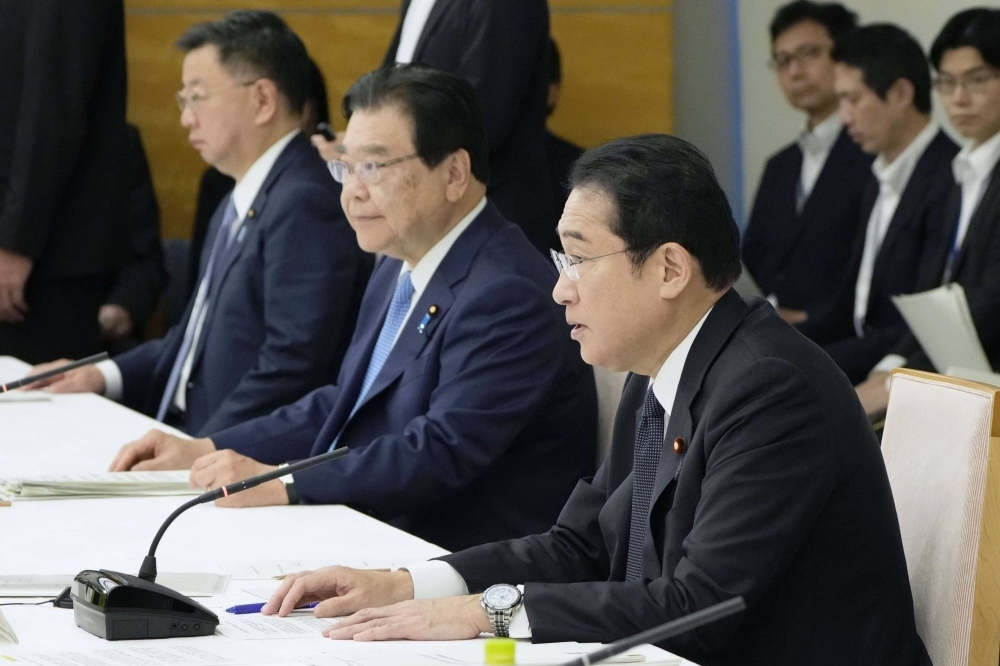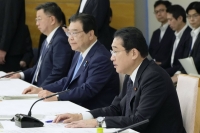Japan expects a smaller-than-projected primary balance deficit of ¥1.3 trillion ($9 billion) in fiscal 2025 due to increased tax revenue, though returning to a surplus will likely not come until a year later than the country's stated goal, the government said Tuesday.
The updated estimate, based on a more optimistic economic growth scenario, still underscores the daunting challenge of restoring the country's fiscal health, the worst among advanced economies, as Prime Minister Fumio Kishida aims to sharply increase spending on defense and child care.
The projected fiscal 2025 deficit in the primary balance — tax revenues minus spending except for debt-servicing costs — compares with the ¥1.5 trillion estimate in January.
The balance is forecast to improve to a ¥2.3 trillion surplus in fiscal 2026, smaller than the previous estimate of ¥2.5 trillion if the economy grows nearly 2% in real terms, and around 3% in nominal terms over the longer term, according to the Cabinet Office.
The world's third-largest economy expanded 1.4% when adjusted for inflation in fiscal 2022.
Japan has already pushed back its goal of turning a primary balance surplus from fiscal 2020 to fiscal 2025.
While the Cabinet Office says further spending cuts will make it possible to achieve its target for that year, its base-line scenario, in which economic growth of around 0.5% is achieved over the longer term, estimates that its goal of restoring fiscal probity will not be achieved in fiscal 2032, the final year of its current forecast.
The projections do not take into account plans to boost the state child care budget, an area Kishida has put focus on, as details are yet to be worked out on how best to secure funding. They did, however, reflect Japan's planned ¥43 trillion increase in defense spending over the next five years to fiscal 2027.
Japan reported a record tax revenue of ¥71.14 trillion for fiscal 2022, helped by higher corporate tax payments amid the easing of the COVID-19 pandemic shock, and accelerating inflation that raised consumption tax revenues.
Rising prices for everyday goods and the prospect of entrenched inflation are threatening to cool consumer sentiment while complicating the Bank of Japan's efforts to maintain ultralow interest rates to achieve stable 2% inflation accompanied by wage growth.
Real wages in Japan have been falling while inflation has been accelerating, negatively affecting consumers.
Based on the latest Cabinet Office projections, consumer prices, a key gauge of inflation, will rise 1.9% in fiscal 2024 and 1.8% in fiscal 2025, before increasing by 2.0% in fiscal 2026.
During that period, nominal wage growth per capita, at 2.6% for the current business year, will likely fail to gather further upward momentum as it will slow to 2.5% in fiscal 2024 before picking up to 2.6% the following year.
Japan's government debt is more than twice the size of its economy, with more than half owned by the BOJ as part of the country's powerful monetary easing policy over the past decade or so.
The central bank has kept borrowing costs extremely low to achieve its 2% inflation target, but future rises in interest rates will increase debt-servicing costs for Japan.
Nominal long-term interest rates are expected to be flat at 0.4% for the three years until fiscal 2025, according to the Cabinet Office.




